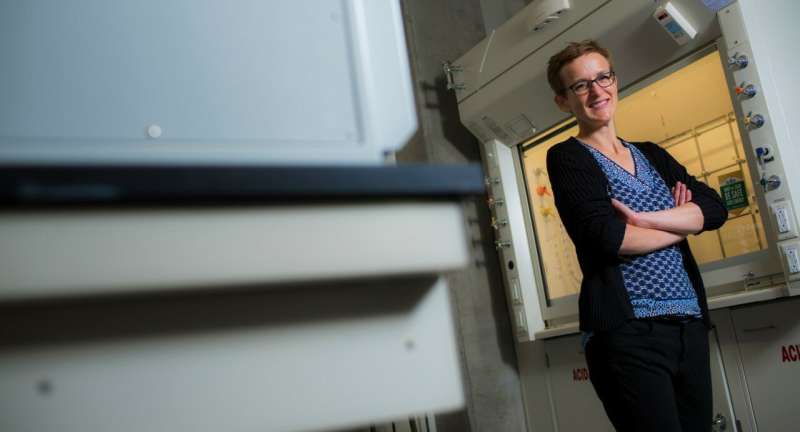Tiny silicon particles could power lithium ion batteries with 10 times more capacity

University of Alberta chemists have taken a critical step toward creating a new generation of silicon-based lithium ion batteries with 10 times the charge capacity of current cells.
"We wanted to test how different sizes of silicon nanoparticles could affect fracturing inside these batteries," said Jillian Buriak, a U of A chemist and Canada Research Chair in Nanomaterials for Energy.
Silicon shows promise for building much higher-capacity batteries because it's abundant and can absorb much more lithium than the graphite used in current lithium ion batteries. The problem is that silicon is prone to fracturing and breaking after numerous charge-and-discharge cycles, because it expands and contracts as it absorbs and releases lithium ions.
Existing research shows that shaping silicon into nano-scale particles, wires or tubes helps prevent it from breaking. What Buriak, fellow U of A chemist Jonathan Veinot and their team wanted to know was what size these structures needed to be to maximize the benefits of silicon while minimizing the drawbacks.
The researchers examined silicon nanoparticles of four different sizes, evenly dispersed within highly conductive graphene aerogels, made of carbon with nanoscopic pores, to compensate for silicon's low conductivity. They found that the smallest particles—just three billionths of a metre in diameter—showed the best long-term stability after many charging and discharging cycles.
"As the particles get smaller, we found they are better able to manage the strain that occurs as the silicon 'breathes' upon alloying and dealloying with lithium, upon cycling," explained Buriak.
The research has potential applications in "anything that relies upon energy storage using a battery," said Veinot, who is the director of the ATUMS graduate student training program that partially supported the research.
"Imagine a car having the same size battery as a Tesla that could travel 10 times farther or you charge 10 times less frequently, or the battery is 10 times lighter."
Veinot said the next steps are to develop a faster, less expensive way to create silicon nanoparticles to make them more accessible for industry and technology developers.
The study, "Size and Surface Effects of Silicon Nanocrystals in Graphene Aerogel Composite Anodes for Lithium Ion Batteries," was published in Chemistry of Materials.
More information: Maryam Aghajamali et al. Size and Surface Effects of Silicon Nanocrystals in Graphene Aerogel Composite Anodes for Lithium Ion Batteries, Chemistry of Materials (2018). DOI: 10.1021/acs.chemmater.8b03198
Journal information: Chemistry of Materials
Provided by University of Alberta




















